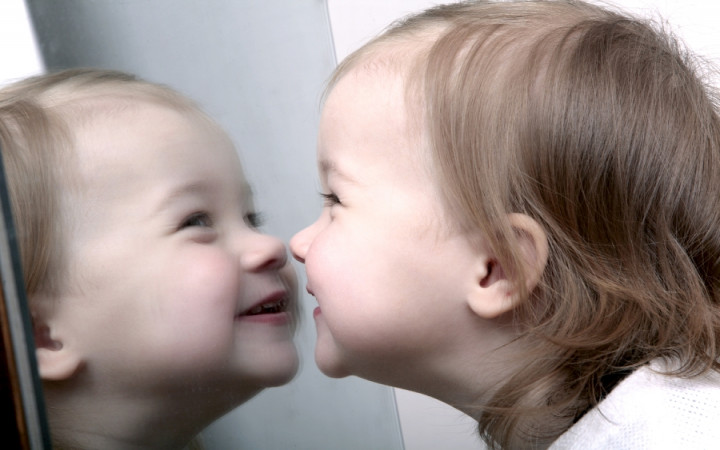Today’s Wonder of the Day was inspired by Cody from CeterBluff, AL. Cody Wonders, “How does a mirror reflect?” Thanks for WONDERing with us, Cody!
Would you believe that mirrors have been around since the beginning of time? It's true! The first human beings ever to look into a calm, dark pool of water saw their reflections.
Don't you wonder what their reactions were? Who are those people? And what are they doing in the water?!
Basically, anything with a smooth surface that reflects almost all of the light that hits it — with only very little light absorbed or scattered — can be a mirror. The key factor is a smooth surface, because rough surfaces scatter light instead of reflecting it.
When photons — rays of light — coming from an object (your smiling face, for example) strike the smooth surface of a mirror, they bounce back at the same angle. Your eyes see these reflected photons as a mirror image. The mirror image is reversed, which you can easily see if you stand in front of a mirror with a shirt with words on it. The words on the shirt appear backwards in the mirror.
Of course, not all smooth surfaces act as mirrors. If a smooth surface absorbs the photons, they can't bounce back and there will be no reflection.
Although calm, dark water has been used as a mirror since the beginning of time, people started making mirrors thousands of years ago. The first mirrors were likely polished stones, such as obsidian (a type of volcanic glass). Large pieces of polished metal, such as brass, were also used as mirrors, although these were very expensive.
The modern mirrors you're familiar with are much more recent. European glass makers began developing a process of coating clear glass with a thin layer of reflective metal in the 15th and 16th centuries.
Today, mirrors are usually made of clear glass that has been coated on one side with a thin film of metal, such as silver or aluminum. The mirrors in most bathrooms are these types of mirrors, known as plane mirrors. They are flat and reflect the objects in front of them accurately, maintaining the same relative size and position of the objects reflected.
In addition to helping you make sure your hair looks nice before you head out to school or off to work, mirrors serve many important functions. For example, rear-view mirrors on a car allow you to see what's behind you before you back up. Mirrors are also important parts of telescopes and microscopes.
Mirrors can even help you watch television. Today's high-definition televisions often rely upon millions of microscopic mirrors to display those beautiful, crisp images you enjoy watching so much!




